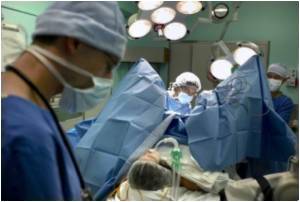
"Our findings tell us what cells and channels are important in making the anesthetic work," said lead author Phil Morgan, MD, researcher at Seattle Children's Research Institute and University of Washington professor of anesthesiology and pain medicine. "The scientific community has attempted to uncover the secrets of how anesthetics work since the 1860s, and we now have at least part of the answer." Margaret Sedensky, MD, Seattle Children's Research Institute and a UW professor of anesthesiology and pain medicine, and Vinod Singaram, graduate student, Case Western Reserve University, are co-lead authors of the study.
The team studied the roundworm after inserting a pigment or protein typically found in the retina of a human eye — called a retinal-dependent rhodopsin channel — into its cells. The proteins in cell membranes act as channels to help movement. Researchers then used a blue light, activating channels in the roundworm that allowed the immediate reversal of anesthetics, and resulting in the roundworm waking up and seemingly swimming off the slide. A video of a roundworm reacting to the blue light, waking up from anesthesia can be found here: http://www.youtube.com/watch?v=FhtFvKlnwxU
The team's findings won't immediately translate into a discovery that would be available for humans, cautioned Dr. Morgan, who has been working in this field for some 25 years. "But it tells us what function we have to treat to try to do so," he said.
"We believe that there is a class of potassium channels in humans that are crucial in this process of how anesthetics work and that they are perhaps the ones that are sensitive to potential anesthesia reversal. There are drugs for blocking these channels and with these same drugs, maybe we can eventually reverse anesthesia." Potassium channels are found in all living organisms and in most cell types, and they control a wide variety of cell functions.
Anesthesia medications are used in both children and adults, but many are used more often in kids. Dr. Morgan and his colleagues plan to replicate the study in other animal models, starting with a mouse.
Advertisement
Source-Eurekalert










